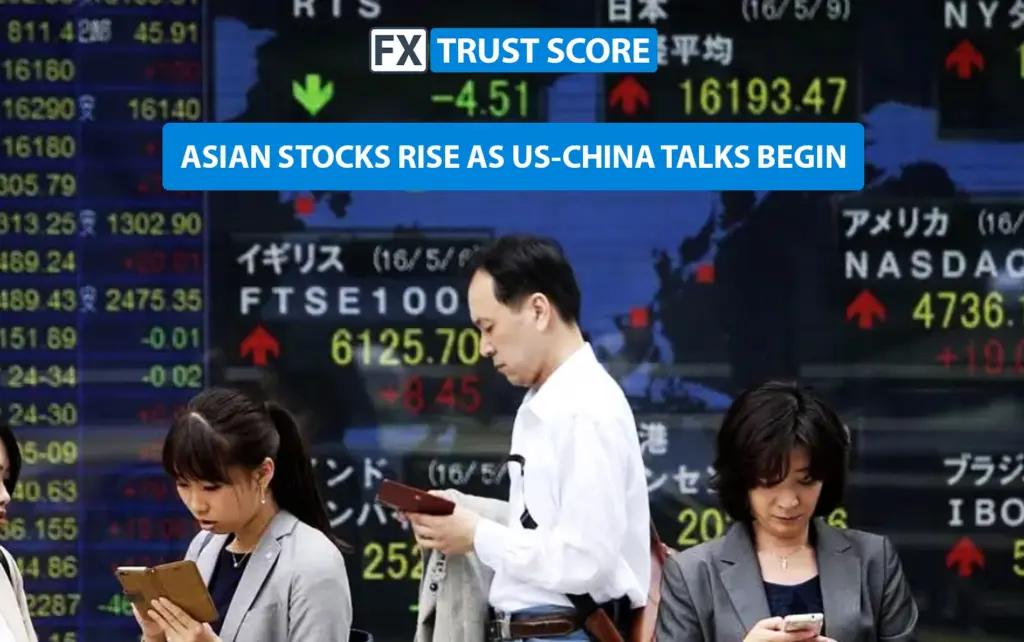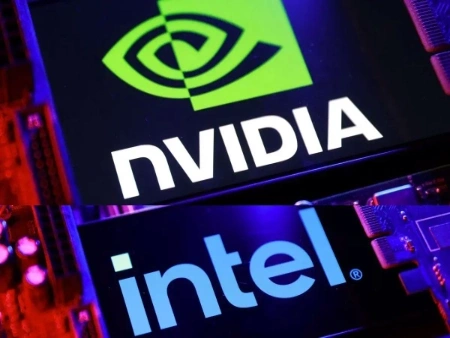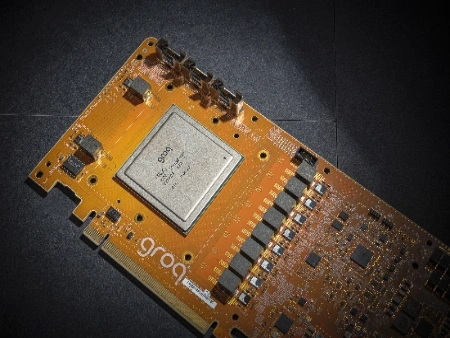Markets across Asia rose following the announcement that trade talks between the US and China would take place in Switzerland later this week.

Major stock indexes across Asia saw gains after officials from the US and China confirmed that talks would begin between the two nations this weekend. Trade discussions are set to take place in Switzerland between 9-12 May, marking the first formal US-China tariff negotiations.
This week’s meeting marks the first major talks between the countries since President Trump hiked tariffs on imports from China to 145% last month. US Treasury Secretary Scott Bessent and trade representative Jamieson Greer will travel to Geneva to meet with Chinese representatives including Vice Premier He Lifeng.
How have Asian markets reacted?
Following the announcement, several key Asian markets climbed, with Japan’s benchmark Nikkei 225 (N225) rising 0.1% while South Korea’s KOSPI Index (KS11) gained 0.4%. Over in Australia, the S&P/ASX 200 (AXJO) advanced 0.5%.
Meanwhile, China’s CSI 300 Index (CSI300) and the Hang Seng Index (HSI) in Hong Kong climbed 0.5%. Both indices reacted to news that China is enacting a series of measures aimed at stimulating the economy across the region in response to Donald Trump’s steep tariffs.
It comes after Beijing’s central bank outlined plans to cut interest rates and reduce requirements for lending from the reserve bank. The bank also stated that the government would increase the amount of money available for factory upgrades and other areas relating to innovation and services.
How have US markets reacted?
In the US, stock markets also reacted positively to the trade talks announcement. Futures tied to the Dow Jones Industrial Average (YM=F) grew 0.5%, S&P 500 futures (ES=F) rose 0.6%, and contracts on the Nasdaq-100 (NQ=F) were up 0.7%.
Corporate earnings released on Tuesday were less encouraging. AMD (AMD), Super Micro (SMCI), and Rivian (RIVN) all warned of tariff-related headwinds in their results. Of the three companies, only AMD saw its shares rise after its report, driven by an optimistic sales forecast.
What has Donald Trump said?
Ongoing market uncertainty remains, with the path to future trade negotiations somewhat unclear. In a meeting with Mark Carney on Tuesday, Trump suggested he wouldn’t engage in back-and-forth negotiations with countries over tariffs. Instead, he said he would offer tariff concessions for those nations looking to avoid higher duties.
“We’re going to put very fair numbers down, and we’re going to say, here’s what this country, what we want. And congratulations, we have a deal. And they’ll either say ‘great,’ and they’ll start shopping, or they’ll say, ‘not good,’” Trump told reporters at the White House.
“It’s going to be a very fair number, it’ll be a low number. We’re not looking to hurt countries,” he added.
What tariffs did the US place on China?
China was the worst hit country of Trump’s “Liberation Day” tariffs on April 2. The world’s biggest exporter and second largest economy was singled out as a target, with a China having a 34% tariff imposed on it, in addition to levies of 20% that already existed.
This started a chain reaction, with China retaliating with tariffs of its own, a move that Trump viewed as demonstrating a lack of respect. Since the, the tariffs on each other’s goods have continued to rise. US tariffs against China currently stand at 145% with China tariffs on the US being 125%.
Several US companies have already begun canceling orders from China. Some have postponed expansion plans or scaled back operations amid a damaging tariff war environment. Added to this, American consumers are currently facing their biggest economic challenge since COVID-19 hit five years ago, while economists say recession risks are on the rise going forward.
Did you find this piece interesting and informative? Visit our Market News section for more of the latest news and developments.






